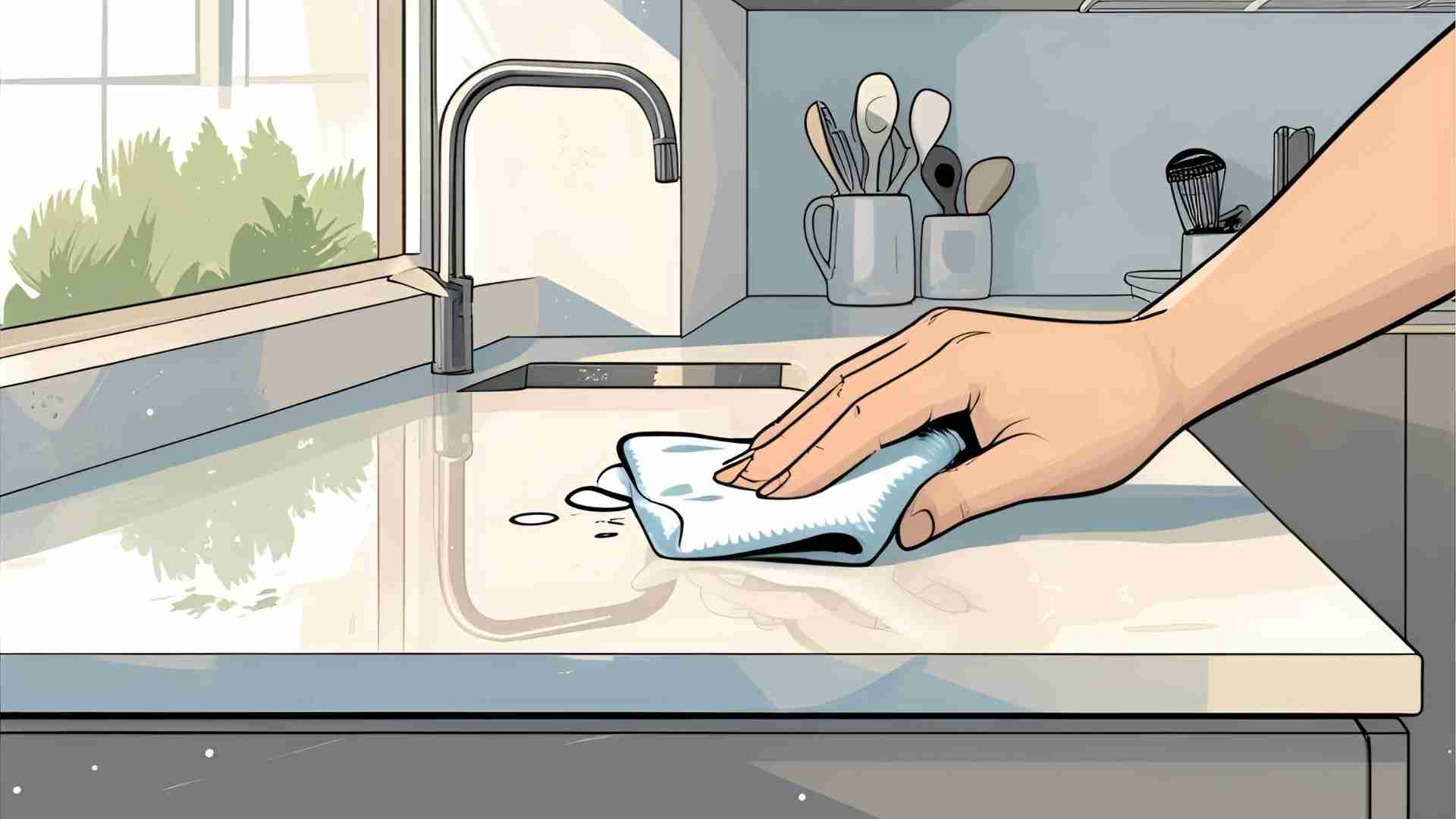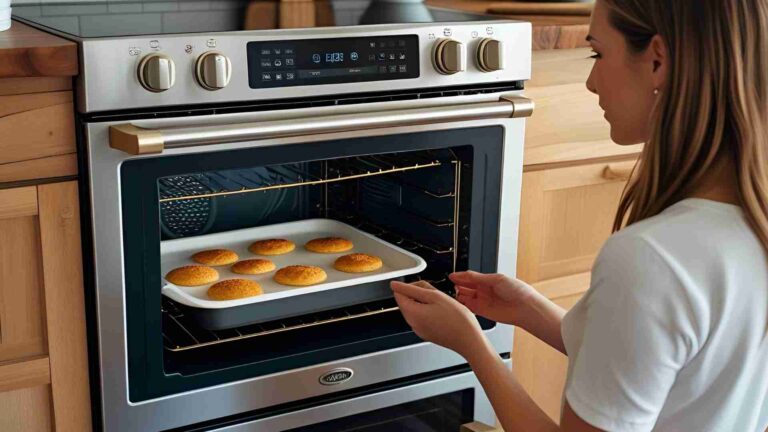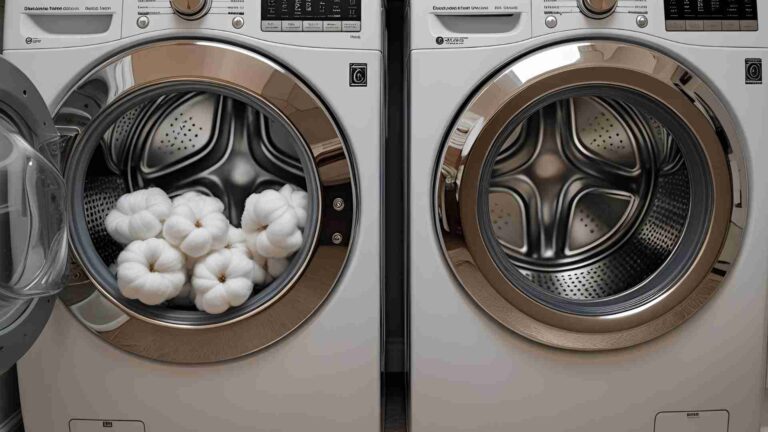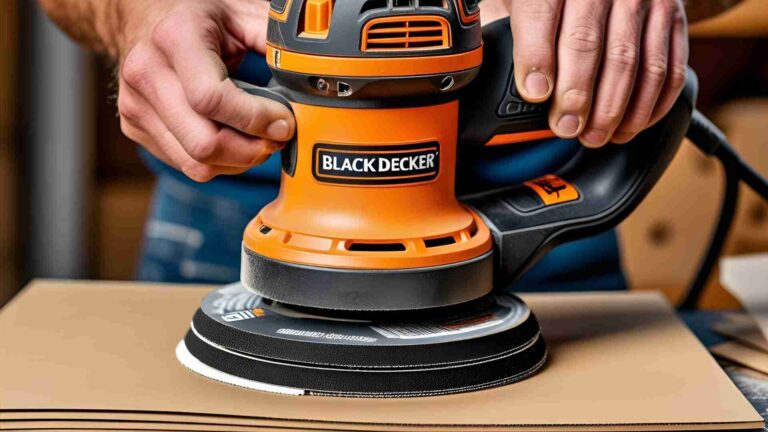Removing marker stain from quartz countertop?
Quartz countertops are prized for their durability, elegance, and low maintenance, making them a popular choice in modern kitchens and bathrooms. However, accidents happen—whether it’s a child’s artistic outburst with a permanent marker or an accidental swipe during a DIY project. Marker stains, particularly from permanent markers like Sharpies, can seem daunting on quartz surfaces. The good news? With the right techniques and tools, these stains can be removed effectively without compromising the countertop’s finish. This comprehensive guide explores proven methods, household remedies, commercial products, and preventive strategies to restore your quartz countertop to its pristine condition. We’ll also dive into why quartz is unique, what to avoid, and how to maintain its beauty for years to come.
Understanding Quartz Countertops and Marker Stains
Quartz countertops are engineered surfaces made from approximately 90-95% ground natural quartz combined with polyresin binders and pigments. This composition creates a non-porous, stain-resistant surface that’s tougher than many natural stones like granite or marble. However, permanent markers pose a unique challenge. Their ink contains dyes and solvents designed to adhere to smooth surfaces, which can penetrate the resin layer of quartz, especially if left untreated for too long. Unlike porous stones that absorb stains, quartz stains are typically surface-level but require targeted solutions to break down the ink without damaging the resin or dulling the finish.
The key to successful stain removal lies in understanding the chemical interaction between the marker ink and the countertop’s surface. Permanent marker ink is a type of dyed lacquer, meaning it’s resistant to water-based cleaners like soap or Clorox wipes. Solvents that dissolve the ink’s binding agents—such as alcohol or acetone—are often the most effective, but they must be used carefully to avoid harming the quartz.
Why Quartz Countertops Are Tricky to Clean
Quartz’s non-porous nature is a double-edged sword. While it resists most stains, its resin component can be susceptible to certain chemicals. Harsh solvents or abrasive tools can dull the finish, strip the resin, or cause micro-scratches, compromising the countertop’s glossy appearance. Additionally, the pigments in quartz can react unpredictably to acidic or alkaline cleaners, especially on lighter-colored surfaces. For example, a marker stain on a white quartz countertop like Casa Blanca (a popular choice with gray, black, and red flecks) may be more noticeable and harder to remove if the ink has bonded with the resin in areas with micro-abrasions or inclusions.
The challenge is compounded when the stain has set for days or weeks, as the ink’s dyes can embed deeper into the resin. In cases like the one described by a fabricator who marked a granite slab with a Sharpie for cutting guides, the stain persisted despite multiple solvent attempts, possibly due to the resin coating or the stone’s texture. This underscores the need for a strategic approach, starting with gentle methods and escalating only as needed.
Proven Methods to Remove Marker Stains
Below are seven proven methods to remove marker stains from quartz countertops, ordered from gentlest to most aggressive. Each method includes step-by-step instructions, effectiveness ratings, and safety tips. Always test any method on an inconspicuous area first to ensure it doesn’t damage your countertop.
1. Rubbing Alcohol (Isopropyl Alcohol)
Effectiveness: ★★★★★
Best For: Fresh stains, Sharpie marks
Price: $3-$5 for a 16 oz bottle (available at pharmacies or supermarkets)
Rubbing alcohol (70% or higher isopropyl alcohol) is the go-to solution for most marker stains on quartz. Its solvent properties dissolve the ink’s binding agents without harming the resin.
Steps:
- Pour a small amount of rubbing alcohol onto a clean, white microfiber cloth.
- Gently dab the stain, avoiding aggressive rubbing to prevent spreading the ink.
- Let the alcohol sit for 1-2 minutes to break down the ink.
- Wipe with a clean section of the cloth.
- Rinse the area with warm water and mild dish soap to remove residue.
- Dry with a soft cloth to restore shine.
Pro Tip: For stubborn stains, soak a cloth in alcohol, place it over the stain, and cover with plastic wrap to prevent evaporation. Leave for 10-15 minutes, then wipe and rinse.
Safety Note: Use in a well-ventilated area and avoid prolonged exposure to prevent resin damage.
2. Hairspray
Effectiveness: ★★★
Best For: Light ink stains
Price: $4-$8 for a 10 oz can (available at drugstores or supermarkets)
Alcohol-based hairsprays can lift marker stains due to their solvent content. This method is less potent than rubbing alcohol but useful for minor stains or when alcohol isn’t available.
Steps:
- Check the hairspray label to ensure it contains alcohol (avoid water-based formulas).
- Spray a small amount onto a clean microfiber cloth.
- Dab the stain gently and let it sit for 1 minute.
- Wipe with a damp cloth.
- Clean the area with warm soapy water and dry thoroughly.
Pro Tip: Hairspray works best on fresh stains and smaller spots. Avoid spraying directly onto the countertop to prevent sticky residue.
Safety Note: Rinse thoroughly to remove any hairspray residue, which can attract dust.
3. Baking Soda Paste
Effectiveness: ★★★
Best For: Stubborn, older stains
Price: $1-$2 for a 1 lb box (available at grocery stores)
Baking soda’s mild abrasive properties can lift set-in stains without scratching quartz when used correctly.
Steps:
- Mix 2 tablespoons of baking soda with enough water to form a thick paste.
- Apply the paste to the stain with a non-scratch sponge.
- Let it sit for 5-10 minutes.
- Gently scrub in circular motions with light pressure.
- Wipe away with a damp cloth and rinse with warm water.
- Dry with a microfiber cloth.
Pro Tip: For extra stubborn stains, combine baking soda with a small amount of rubbing alcohol instead of water for added solvent power.
Safety Note: Avoid heavy scrubbing, which can dull the countertop’s finish.
4. Vinegar and Water Spray
Effectiveness: ★★
Best For: Light surface marks
Price: $2-$4 for a 32 oz bottle of white vinegar (available at grocery stores)
Diluted white vinegar can tackle light marker stains but should be used sparingly due to its acidity.
Steps:
- Mix equal parts white vinegar and water in a spray bottle.
- Spray the solution onto a microfiber cloth (not directly onto the countertop).
- Apply to the stain and let it sit for 2-3 minutes.
- Wipe with a damp cloth and rinse immediately with clean water.
- Dry thoroughly.
Safety Note: Limit vinegar use on quartz, as repeated exposure can dull the finish. Always rinse thoroughly.
5. Magic Eraser
Effectiveness: ★★★★
Best For: Small areas, surface stains
Price: $5-$10 for a pack of 4 (available at supermarkets or online)
Magic Erasers (melamine foam) use micro-abrasion to remove stains but must be used cautiously to avoid dulling quartz.
Steps:
- Dampen the Magic Eraser with water and squeeze out excess.
- Test in an inconspicuous area.
- Gently rub the stain in small, circular motions with light pressure.
- Rinse the area thoroughly with water and dry with a microfiber cloth.
Pro Tip: Use for small, stubborn stains that resist other methods. Avoid overuse to preserve the countertop’s polish.
Safety Note: Never use a dry Magic Eraser, as it can be too abrasive.
6. Bar Keeper’s Friend
Effectiveness: ★★★★
Best For: Deep stains, food coloring stains
Price: $3-$6 for a 12 oz can (available at hardware stores or online)
Bar Keeper’s Friend combines mild abrasives and oxalic acid to tackle tough stains safely when used properly.
Steps:
- Wet the countertop surface.
- Sprinkle a small amount of Bar Keeper’s Friend onto the stain.
- Use a damp, non-scratch sponge to work the powder in circular motions.
- Let it sit for no more than 1 minute.
- Rinse thoroughly and dry with a microfiber cloth.
Pro Tip: Test on a hidden area first, as overuse can dull the finish.
Safety Note: Avoid prolonged contact, as oxalic acid can affect the resin if left too long.
7. WD-40 (Last Resort)
Effectiveness: ★★★
Best For: Difficult ink marks
Price: $5-$8 for a 12 oz can (available at hardware stores or online)
WD-40 can dissolve stubborn marker stains but should only be used when other methods fail due to its oily residue.
Steps:
- Spray a small amount of WD-40 onto a clean cloth.
- Dab the stain gently and let it sit for 2-3 minutes.
- Wipe with a clean cloth.
- Clean the area thoroughly with warm soapy water, rinsing multiple times.
- Dry with a microfiber cloth.
Safety Note: Thorough rinsing is critical to remove all oily residue, which can affect the resin if left behind.
Comparison Table: Methods for Removing Marker Stains
| Method | Effectiveness | Best For | Price | Ease of Use | Risk Level |
|---|---|---|---|---|---|
| Rubbing Alcohol | ★★★★★ | Fresh stains, Sharpie marks | $3-$5 | High | Low |
| Hairspray | ★★★ | Light ink stains | $4-$8 | Medium | Low |
| Baking Soda Paste | ★★★ | Stubborn, older stains | $1-$2 | Medium | Low |
| Vinegar & Water | ★★ | Light surface marks | $2-$4 | High | Medium |
| Magic Eraser | ★★★★ | Small areas, surface stains | $5-$10 | Medium | Medium |
| Bar Keeper’s Friend | ★★★★ | Deep stains, food coloring | $3-$6 | Medium | Medium |
| WD-40 | ★★★ | Last resort for difficult marks | $5-$8 | Low | High |
Advanced Techniques for Persistent Stains
In rare cases, such as the fabricator’s experience with a Sharpie-marked granite slab coated with resin, standard methods may not suffice. The marker ink may have penetrated porous areas or bonded with the resin, requiring advanced techniques. Here are two approaches inspired by professional stone care:
Poultice Method
A poultice combines a solvent with an absorbent powder to draw out deep stains. This method is particularly useful for resin-coated surfaces or porous inclusions.
Materials:
- Denatured alcohol or Motsenbocker’s Lift Off #3 ($8-$12, available at hardware stores)
- Baking soda or diatomaceous earth
- Plastic wrap
- Tape
Steps:
- Mix denatured alcohol with enough baking soda to form a thick paste.
- Apply the paste over the stain, covering it completely.
- Cover with plastic wrap and tape the edges to seal.
- Let it sit for 24 hours to allow the solvent to penetrate and the powder to absorb the ink.
- Remove the plastic and wipe away the paste with a damp cloth.
- Rinse thoroughly and dry.
Pro Tip: Repeat the process if the stain persists, testing on a scrap piece first to ensure compatibility with your countertop’s resin.
Safety Note: Avoid acetone or lacquer thinner, as they can dissolve polyester or epoxy resins in quartz.
UV Light Exposure
Permanent marker dyes are organic and can fade under ultraviolet (UV) light. This method is experimental but may work for faint, residual stains.
Materials:
- UV black light ($15-$30, available online or at hardware stores)
Steps:
- Place the UV light 6-12 inches above the stain.
- Expose the area for several hours, checking periodically for fading.
- Wipe the area with rubbing alcohol to remove any loosened ink.
- Rinse and dry.
Pro Tip: Test on a scrap piece, as prolonged UV exposure may affect the countertop’s pigments.
Safety Note: Use UV-protective glasses and avoid direct skin exposure.
Chart: Decision Tree for Marker Stain Removal
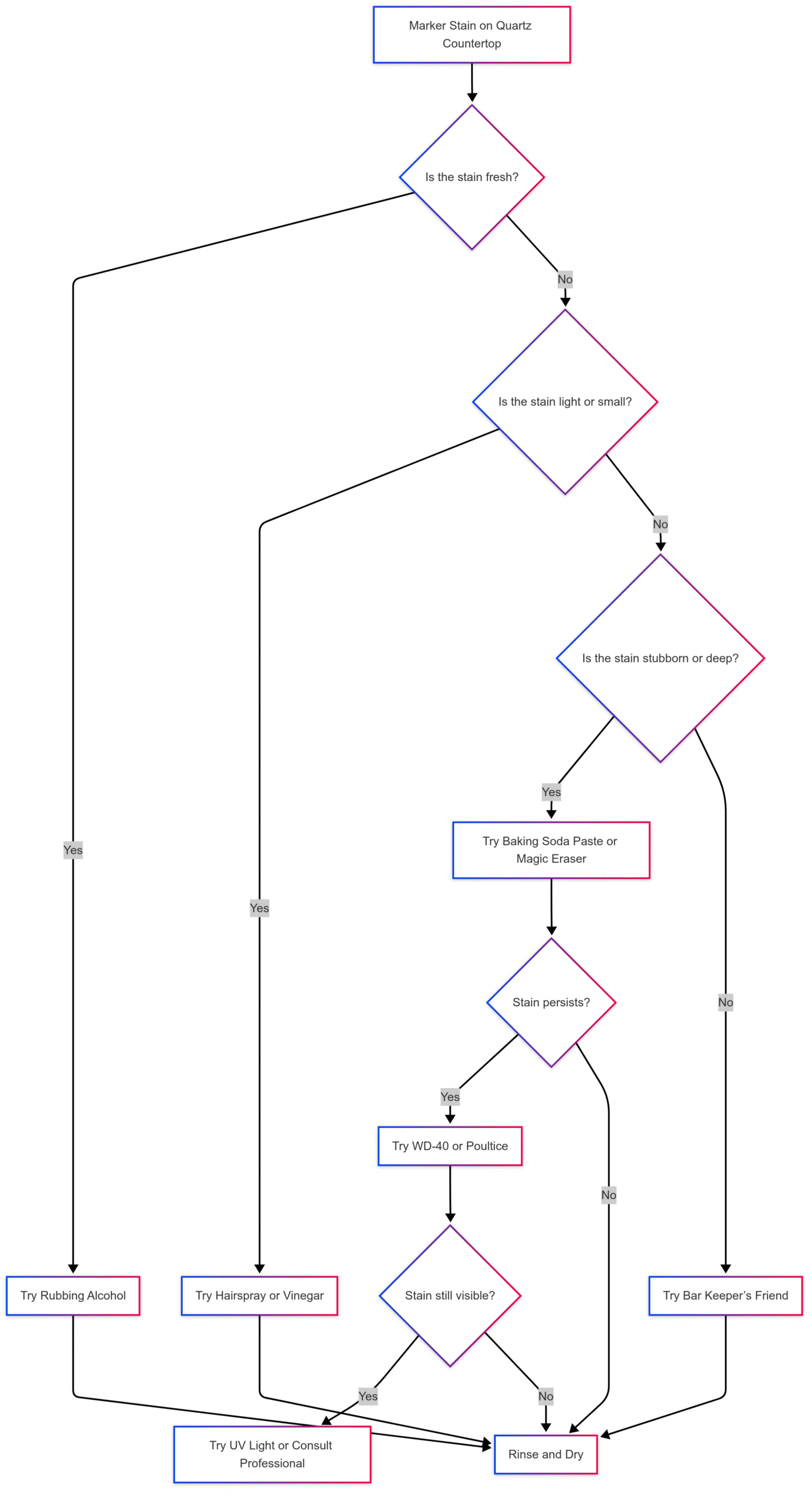
Chart: Decision Tree for Marker Stain Removal
This decision tree helps you choose the appropriate method based on the stain’s age and severity, minimizing trial and error.
What NOT to Use on Quartz Countertops
Using the wrong products can damage your quartz countertop, leading to costly repairs. Avoid the following:
- Acetone/Nail Polish Remover: Dissolves resin, causing dulling or etching.
- Bleach: Discolors quartz, especially lighter shades.
- Harsh Abrasives (e.g., Steel Wool): Causes permanent scratches.
- Ammonia-Based Cleaners: Dulls the finish over time.
- Acidic Cleaners (e.g., Lemon Juice): Erodes the resin with repeated use.
- Alkaline Cleaners (e.g., Drain Cleaners): Damages the surface and resin.
Always consult your countertop manufacturer’s care guidelines, as formulations vary. For example, some brands may tolerate mild vinegar, while others recommend only neutral cleaners.
Prevention and Maintenance Tips
Preventing marker stains is easier than removing them. Here are practical tips to keep your quartz countertops pristine:
- Store Art Supplies Safely: Keep permanent markers and other staining agents away from countertops.
- Use Protective Barriers: Place cutting boards, trivets, or mats under art projects or food prep.
- Clean Spills Immediately: Wipe up marker marks, food coloring, or spices promptly to prevent setting.
- Educate Household Members: Teach children and family about countertop care.
- Maintain Regularly: Clean with mild soap and water weekly, using a microfiber cloth to avoid scratches.
- Seal (If Needed): Some quartz countertops benefit from periodic sealing, especially if resin-coated. Check with your manufacturer.
Regular maintenance enhances quartz’s stain resistance and prolongs its lifespan. For example, a well-maintained countertop is less likely to hold onto marker ink than one with accumulated micro-abrasions.
Restoring Your Quartz Countertop’s Beauty
A marker stain doesn’t have to be a permanent mark on your quartz countertop. By starting with gentle methods like rubbing alcohol and escalating to advanced techniques like a poultice or UV light only when necessary, you can remove even the most stubborn stains. Patience and caution are key—always test solutions and avoid harsh chemicals that could damage the resin or finish.
If all else fails, consult a professional stone care specialist, especially for large or valuable installations like the 10’x4’ Casa Blanca granite slab mentioned earlier. They can assess whether the stain is in the resin or the stone and recommend specialized treatments. For those in the market for new countertops, consider brands known for durability and stain resistance, such as Silestone or Caesarstone, which offer extensive warranties and care guides.
Additional Resources
For more cleaning tips, explore these related topics:
- Removing Other Stains: Learn how to tackle grease, wine, or food coloring on quartz.
- General Quartz Care: Discover best practices for daily maintenance and sealing.
- Alternative Surfaces: Compare quartz with granite, marble, or laminate for stain resistance.
By following this guide, you can confidently restore your quartz countertop and keep it looking flawless for years to come.
Please share this Removing marker stain from quartz countertop? your friends and do a comment below about your feedback.
We will meet you on next article.
Until you can read, Air Compressor Size for an Industrial Finish Nailer
